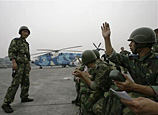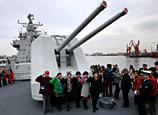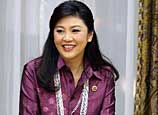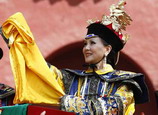
360Fashion is marketing the application - which it calls TryLive - to fashion designers, clothing retailers and event organizers, saying the setup is perfect for today's busy consumers. "Fashion shoppers can now try anything on, without taking anything off, anywhere," a sign outside the virtual dressing room reads.
360Fashion Network debuted its AR products in March 2012, when it put up an exhibition chronicling the history of CHIC, or the China International Clothing and Accessories Fair, says company founder and CEO Anina Trepte. Using the 360AR app on their mobile phones or tablets, visitors could see videos, graphics and more photos appear on top of the photos on exhibit.
"We display a digital layer on top of physical objects in the real world," Trepte, a model turned entrepreneur from the United States Midwest, says, explaining AR's basic concept.
Her company has also created AR for fashion publications, where video clips, animation and online links seem to pop out of pages. Its booth at the recent CHIC fair also showcased an eyewear fitting counter, where visitors could virtually try on eyeglasses and sunglasses with just a click of a mouse.
"These worlds of the digital and physical are starting to merge and give us new forms of information," Trepte says, "and this will drive sales."
Last summer, Swarovski set up an exhibition in Shanghai, which featured "mirrors" that enabled visitors to virtually try on its jewelry and crystal-encrusted shoes. A few months later, Buick publicized in China the upcoming launch of a new car model by creating an AR-based win-a-car contest.
In China, where middle-class consumers and Internet users are quickly increasing, augmented reality is expected to grow as a marketing tool.
"AR is a good way to tap the young generation of mobile-savvy Chinese consumers, who are now spending less and less time on PCs and more on mobile devices," says Emma Li, research lead at L2, a New York think tank for digital innovation among consumer brands.


















 Giant pandas safe in quake-hit zone
Giant pandas safe in quake-hit zone


![]()
